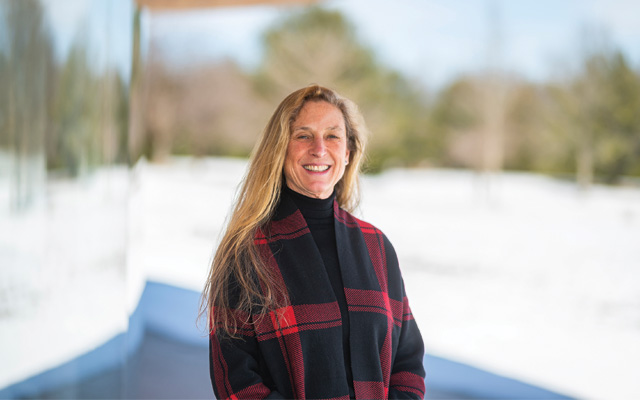Kimberly Kelly, president of The International Association of Butterfly Exhibitors and Suppliers, is a passionate advocate for environmental equity, actively working to create sustainable practices

What drew you to the world of butterflies?
Having worked in both traditional and non-traditional educational settings, I am deeply passionate about providing meaningful connections to the natural world that sustains us.
How do we develop these relationships? How do we provide opportunities for the public to experience and understand that we are reliant on nature’s complex and essential systems? These are critical questions, especially as we confront alarming rates of habitat destruction, biodiversity loss, and climate change. Educating about environmental equity, while maintaining sustainable communities is at the heart of what I do.
Another aspect that draws me to the world of butterfly exhibits is the need to explore new ways of understanding our environments and strengthening our connections to communities and cultures.
As president of The International Association of Butterfly Exhibitors and Suppliers (IABES), what is your vision for the association?
My vision for the association is to expand and attract more members, and create more opportunities for communities and countries that can successfully connect conservation and economic opportunity.
We will also continue to develop our Best Management Practices with a strong focus on restoration, regeneration and resiliency.
How does IABES actively promote a balance between the commercial aspects of butterfly exhibitions, and the critical need for conservation and environmental responsibility?
IABES actively promotes a balance between the commercial aspects of butterfly exhibitions, and the crucial need for conservation and environmental responsibility through its core values of education, conservation and community engagement.
At IABES, we believe that when people value something, they are more inclined to protect and care for it. This is reflected in the work of our butterfly breeders, who are not only passionate about their craft, but are also dedicated to fostering communities rooted in conservation, education, and sustainability.
A prime example of this ethos in action is Entopia by Penang Butterfly Farm. Entopia creates an immersive and inspiring experience that connects people to nature, aligning with their vision “to live in harmony with nature”. Such experiences help raise awareness about the importance of conservation while showcasing the beauty of butterflies.
Our members adhere to strict ethical guidelines, which they proudly support and uphold. These guidelines, along with our Best Management Practices, ensure that butterfly breeding is done sustainably.
Butterflies are raised in areas where their host plants are important components of the ecosystem. Many of our members work to conserve these areas of high-value biodiversity.
Breeding butterflies requires native plantings and healthy ecosystems. This also provides diversified economic opportunities for the local communities. Our members, both breeders and suppliers, are building communities as we partner with conservation groups and educational institutions worldwide.
IABES members are from many countries. How does the international association facilitate member engagement?
After Covid-19, we spent time reassessing our strategic goals to look at ways to engage, educate, and support our members, while looking to add new members. It is a major role for the board of director members, as it is essential to any organisation, and especially an international association.
Our communications committee is active on many media platforms, including social media, our newly-upgraded website with translator functions, and media channel chat groups.
Our signature newsletter, the Flutterings, published six times a year, is a premier publication containing articles from contributors around the globe. It is for members, written by members, with contributions from partner institutions that contribute current research, education, technology, conservation, and industry resources.
We are always looking for ways to engage our members in collaborative efforts with institutions such as the Terrestrial Invertebrate Taxon Advisory Group; The Elen (Enconto sobre Lepidoptera Neotropicals – Meeting on Neotropical Lepidoptera); McGuire Center for Lepidoptera & Biodiversity; European Association of Zoos and Aquaria; and The Association of Zoos and Aquariums.
What strategies does IABES employ to secure funding for its conservation and research efforts?
One method is raising awareness among members and the public about the importance of our mission.
A wonderful example is our Save Homerus project, which focuses on protecting Jamaica’s critically endangered butterfly. This collaborative effort with partners underscores our commitment to safeguarding species facing severe pressures and nearing extinction.
Currently, 10 per cent of every membership goes towards funding our Conservation Research Committee’s grant programme. We are reviewing that with an eye towards increasing that percentage.
In addition, we have an active sponsorship programme, and provide other donation opportunities through our website to support our conservation and research activities. Our CRC operates an annual grant cycle, where qualified applicants from around the world can apply for funding to support conservation research projects.













